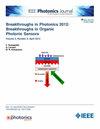The DAS With Deep Neural Network Based on DSR-Net for Fast Earthquake Recognition
IF 2.1
4区 工程技术
Q3 ENGINEERING, ELECTRICAL & ELECTRONIC
引用次数: 0
Abstract
Earthquake early warning can effectively reduce the potential earthquake damage and is extremely strict to the sensor location and identification time. Distributed fiber acoustic sensing (DAS) is a novel seismic monitoring system with existing optical communication fiber as sensors and the passive seismic transducers are opt to densely deploy in harsh earthquake prone area, saving valuable time for earthquake to reach sensors. In order to shorten the earthquake identification time and increase the accuracy of earthquake identification at the same time, a fast earthquake identification method is proposed with DAS and DSR-Net (DAS Seismic Recognition Network) deep learning network. The signal time-frequency image samples are constructed to extract signal features, and DSR-Net is used for recognition. The feasibility is verified in natural earthquake monitoring, and the recognition accuracy of the first 5s seismic data is up to 88.29%. As the duration of the earthquake increases, the recognition accuracy reaches more than 93%. This method will be an important reference for earthquake early warning and natural disaster prevention.基于DSR-Net的深度神经网络DAS快速地震识别
地震预警可以有效减少潜在的地震破坏,对传感器的位置和识别时间要求极为严格。分布式光纤声学传感(DAS)是一种新型的地震监测系统,它以现有的光通信光纤为传感器,将被动地震传感器选择密集部署在条件恶劣的地震多发区,节省了地震到达传感器的宝贵时间。为了缩短地震识别时间,同时提高地震识别的准确性,提出了一种利用 DAS 和 DSR-Net (DAS 地震识别网络)深度学习网络的快速地震识别方法。通过构建信号时频图像样本来提取信号特征,并利用 DSR-Net 进行识别。其可行性在自然地震监测中得到了验证,前 5 秒地震数据的识别准确率高达 88.29%。随着地震持续时间的增加,识别准确率达到 93% 以上。该方法将为地震预警和自然灾害预防提供重要参考。
本文章由计算机程序翻译,如有差异,请以英文原文为准。
求助全文
约1分钟内获得全文
求助全文
来源期刊

IEEE Photonics Journal
ENGINEERING, ELECTRICAL & ELECTRONIC-OPTICS
CiteScore
4.50
自引率
8.30%
发文量
489
审稿时长
1.4 months
期刊介绍:
Breakthroughs in the generation of light and in its control and utilization have given rise to the field of Photonics, a rapidly expanding area of science and technology with major technological and economic impact. Photonics integrates quantum electronics and optics to accelerate progress in the generation of novel photon sources and in their utilization in emerging applications at the micro and nano scales spanning from the far-infrared/THz to the x-ray region of the electromagnetic spectrum. IEEE Photonics Journal is an online-only journal dedicated to the rapid disclosure of top-quality peer-reviewed research at the forefront of all areas of photonics. Contributions addressing issues ranging from fundamental understanding to emerging technologies and applications are within the scope of the Journal. The Journal includes topics in: Photon sources from far infrared to X-rays, Photonics materials and engineered photonic structures, Integrated optics and optoelectronic, Ultrafast, attosecond, high field and short wavelength photonics, Biophotonics, including DNA photonics, Nanophotonics, Magnetophotonics, Fundamentals of light propagation and interaction; nonlinear effects, Optical data storage, Fiber optics and optical communications devices, systems, and technologies, Micro Opto Electro Mechanical Systems (MOEMS), Microwave photonics, Optical Sensors.
 求助内容:
求助内容: 应助结果提醒方式:
应助结果提醒方式:


